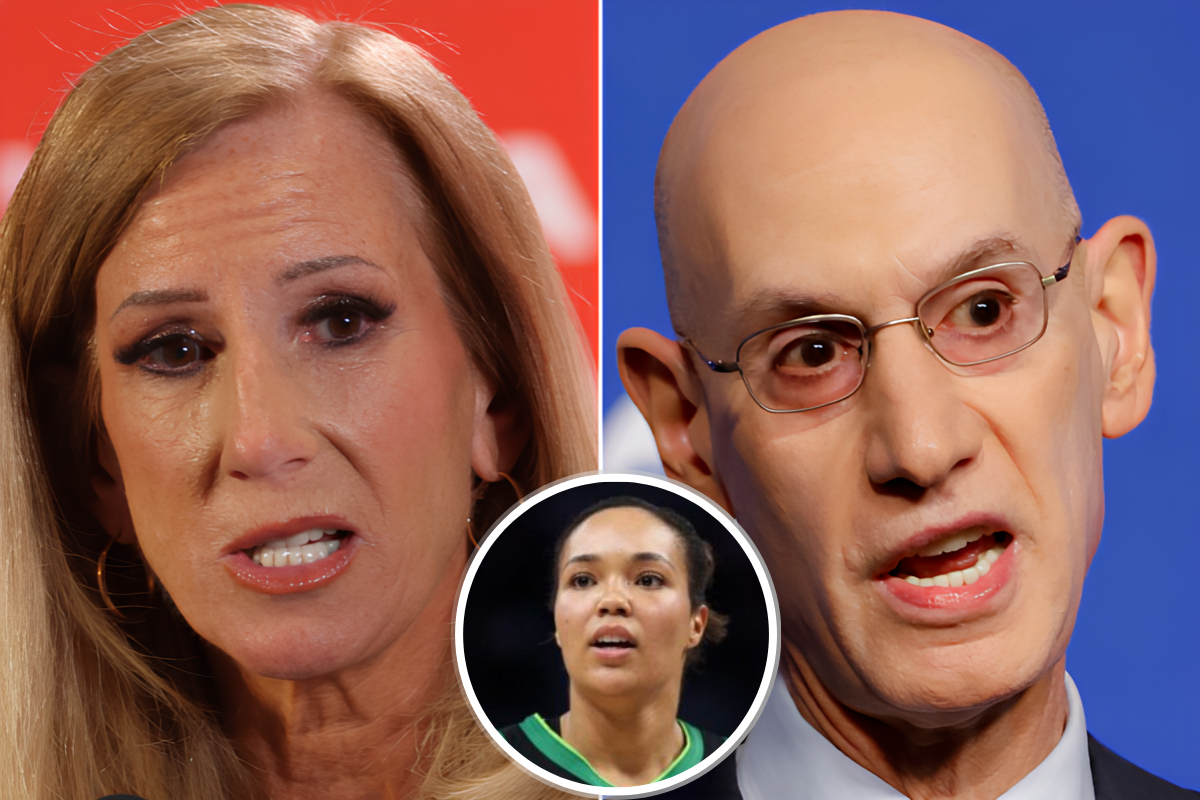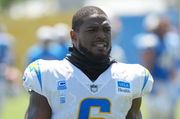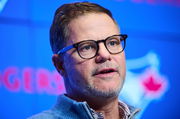
Imago
Credits: Imagn

Imago
Credits: Imagn
The league is generating record revenue, the arenas are being moved, expansions are in talks, and players have become household names. Even then, if the maximum salary still caps off at $250,000, you get players showing up with “Pay us what you owe us” T-shirts on a day when the spotlight’s shining the brightest. And it isn’t just them. When Cathy Engelbert presented the All-Star Game MVP trophy to Napheesa Collier, fans filled Gainbridge Fieldhouse with boos and “Pay them!” chants. But are Cathy and the WNBA the only ones to blame?
Watch What’s Trending Now!
Days after leading her self-drafted team to a 151–131 win as captain and top vote-getter, Collier finally spoke about the purpose behind the meeting attended by 40 different WNBA players
“I’m not sure what we’re trying to change. The problem is we’re so handcuffed. The NBA owns like 40% to 50% of the WNBA. And that’s where it’s so hard to compare because they’re like, you know, well, we get the players this much. But we, on our side, automatically have to take 40% off to give to the NBA before we see any money,” she shared in a recent episode of A Touch More podcast by Sue Bird and Megan Rapinoe.
ADVERTISEMENT
The NBA currently owns 42% of the league. Another 42% belongs to private WNBA ownership, while the remaining 16% is held by an investment group that injected $75 million into the league in 2022. This distribution limits the revenue sharing the players are negotiating for. To break it down further, WNBA players receive only 9.3% of league revenue when in comparison, their counterparts rake in between 49% to 50%. With the NBA already owning as much as they do, that number’s as good as nil for Phee and the rest.
And unfortunately, that’s an issue here to stay for a while longer. Because since 1996, the NBA has spent a considerable amount of money on the league, and according to an NBA team executive, “The WNBA owes the NBA so much we won’t see any windfall for years.”
Just last year, they were expected to lose $40 million. However, on the brighter side, that was $10 million less than the previous, thanks to a massive 170% boost in viewership. And later, the league secured a $2.2 billion, 11-year media rights deal that begins in 2026. So not too long before things start looking up for the league. Until then, the players will continue fighting for a revenue share.
ADVERTISEMENT
“We are going after rev share so hard… I think everyone sees the vision,” Phee added on the podcast. “We have to be making sure that we are getting a better percentage, first of the league one, and then getting the team one. We don’t have team revenues at all. So we are making sure we are going after that.”
As Phee mentioned, they are handcuffed with regards to the share NBA owns, but the rest, they can fight for and are doing so. As Kelsey Plum described, they want a piece of the pie, not just a piece of part of the pie. They are asking for their deserved share, considering they are the ones fans are tuning in for. In the Lynx forward’s words: “money that’s made through the WNBA, which obviously is through our entertainment.”
ADVERTISEMENT
So the players are aware of the leverage they hold and hence…
WNBA athletes aren’t backing down
WNBA players are no longer waiting quietly on the sidelines—they’re standing firm and making it clear that they want a fairer stake in the league’s growth, and we’ve already seen why. For players like Caitlin Clark and Angel Reese, whose contracts are around $78,000, and veterans capped just over $249,000, that has to change. And players are already taking action.
ADVERTISEMENT
First, they opted out of the current CBA. Then came meetings to reach a mutual agreement. Now, it’s the power of participation—“The players, obviously, are taking this really seriously. We have the most participation in league history. I think we had close to 40 players in our league meeting… It just sends a really strong message that we’re standing really firm on certain areas that we feel really strongly that we need to improve on, and I think we got that message across,” Collier shared.
And yes, that’s just part of the effort—the momentum isn’t slowing down. Collier also revealed that the league and the players’ association are under pressure to find real solutions. “So yeah, we have a meeting this week or next week with the league… I think just taking what we had from All-Star, we’re not going to have an opportunity to get all the players like that together again… So I think that helped to expedite things.”
Top Stories
LIV Golf CEO Breaks Silence as Brooks Koepka Exits Before Contract Expiry

PGA Tour Drops Cryptic Brooks Koepka Statement as He Exits LIV Golf After 3 Years

Steelers Confirm $45M Punishment for DK Metcalf After NFL Suspended WR for 2-Games

NFL Suspends Chargers’ Denzel Perryman for Two Games Over Cowboys Incident

Clark Hunt Admits Being Pressured to Leave Arrowhead After Chiefs Offered $2.4B Proposal

$106.5M Blue Jays Star’s Future Turns Rocky as Ross Atkins Told to Hijack Red Sox’s Gold Glove Target

As of now, the union has hinted at exploring more sustainable, equity-based models that grow alongside the league’s success—similar to what Collier and Breanna Stewart are building through Unrivaled, the highest-paying women’s basketball league during the offseason. So, what do you think? Will anything finally change?
ADVERTISEMENT
ADVERTISEMENT
ADVERTISEMENT
ADVERTISEMENT

